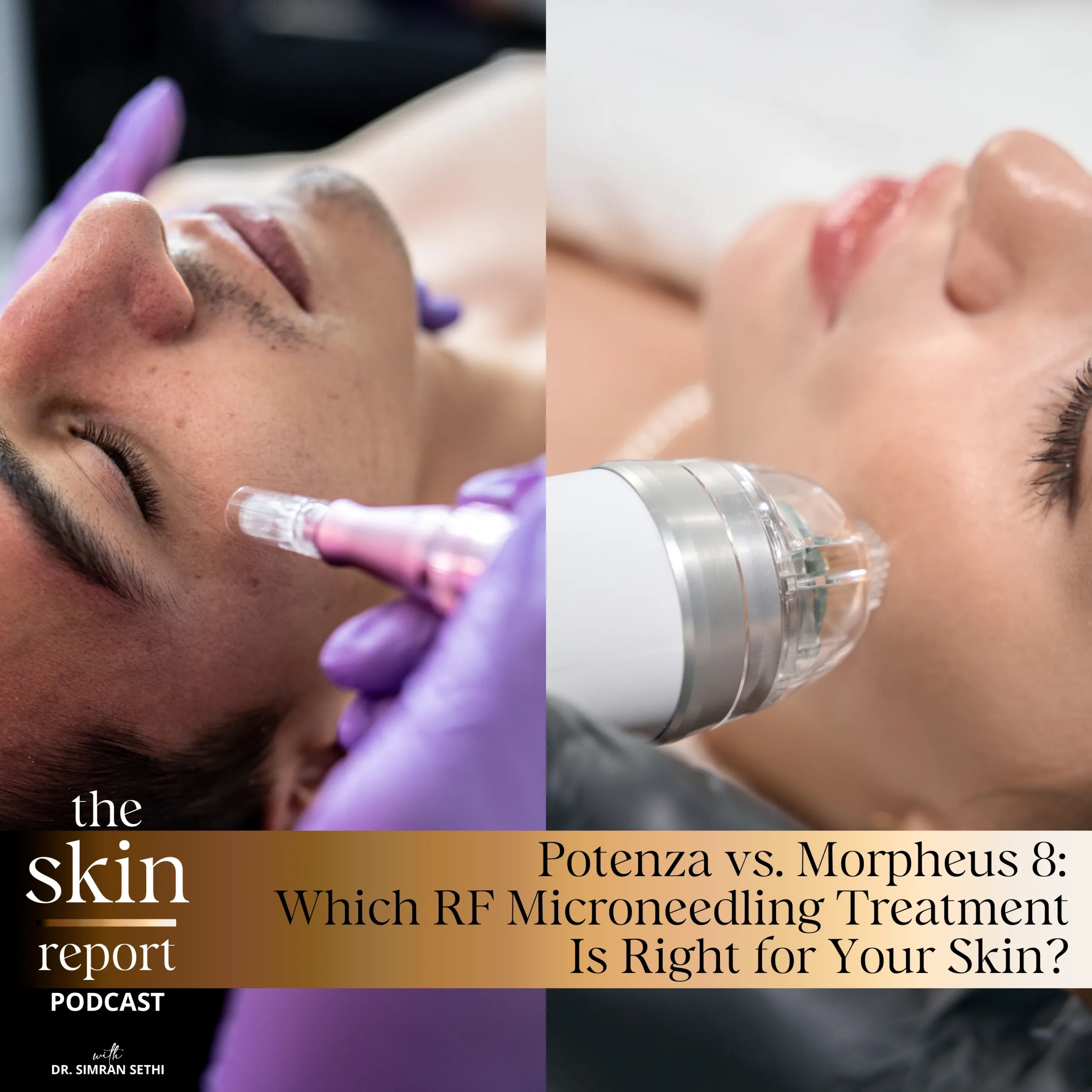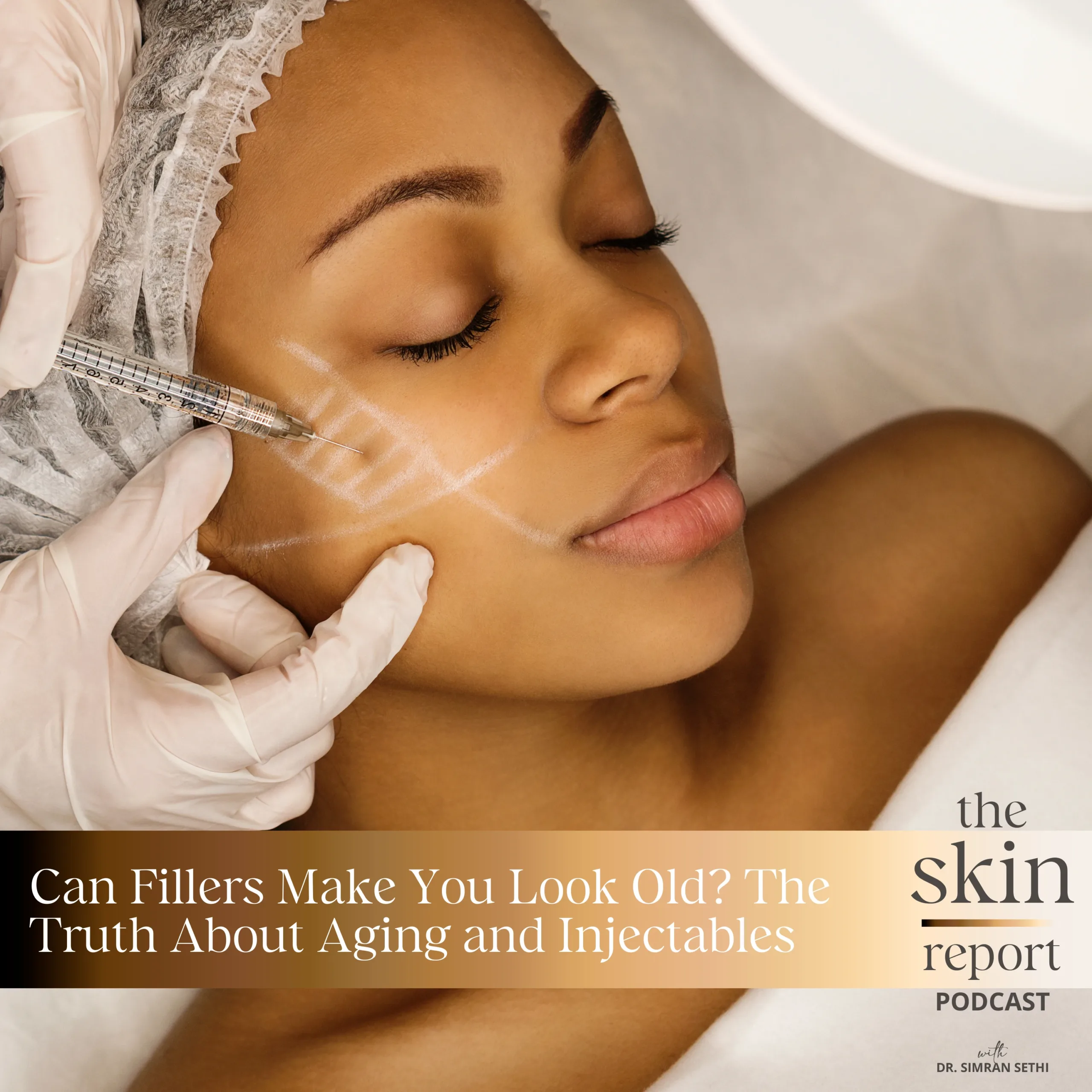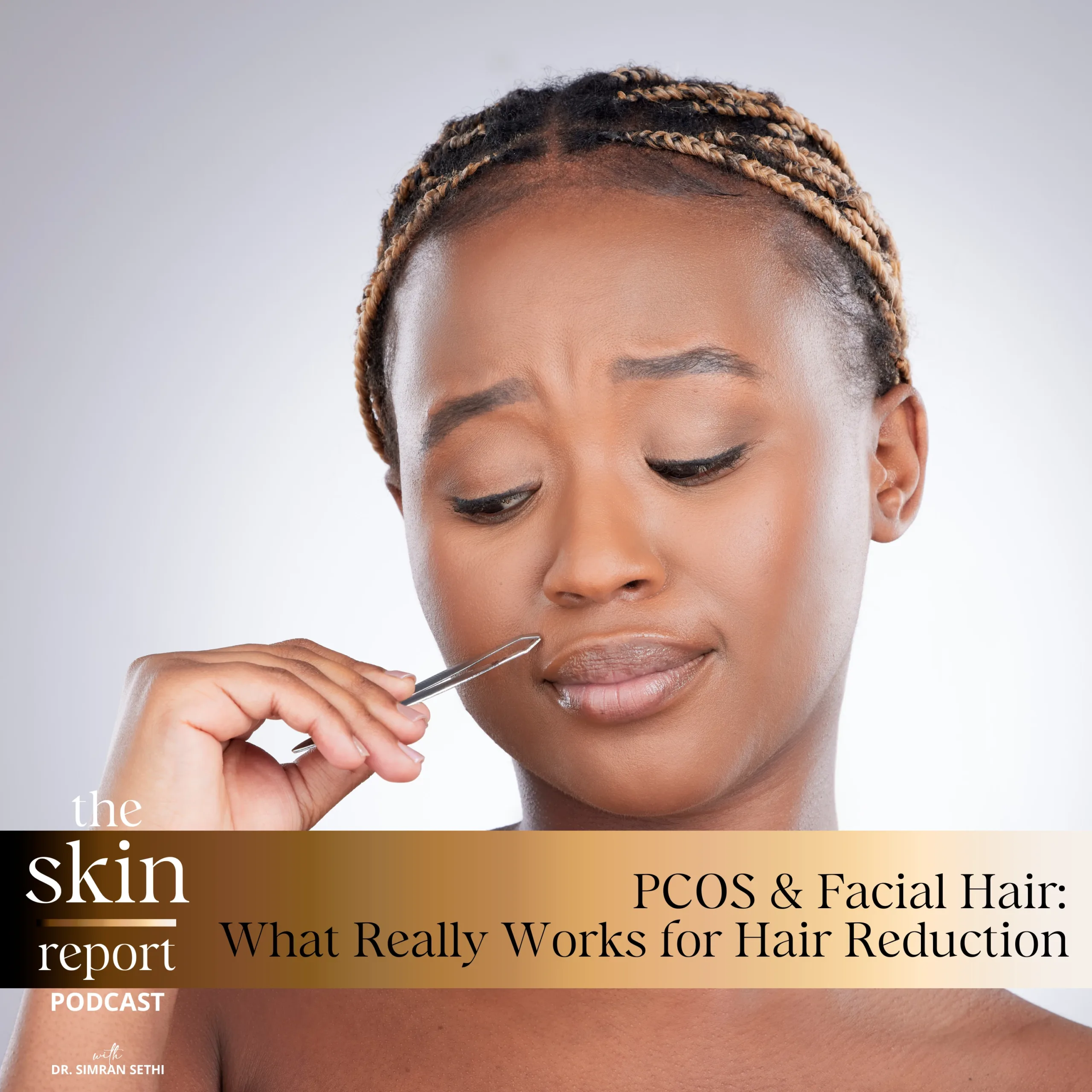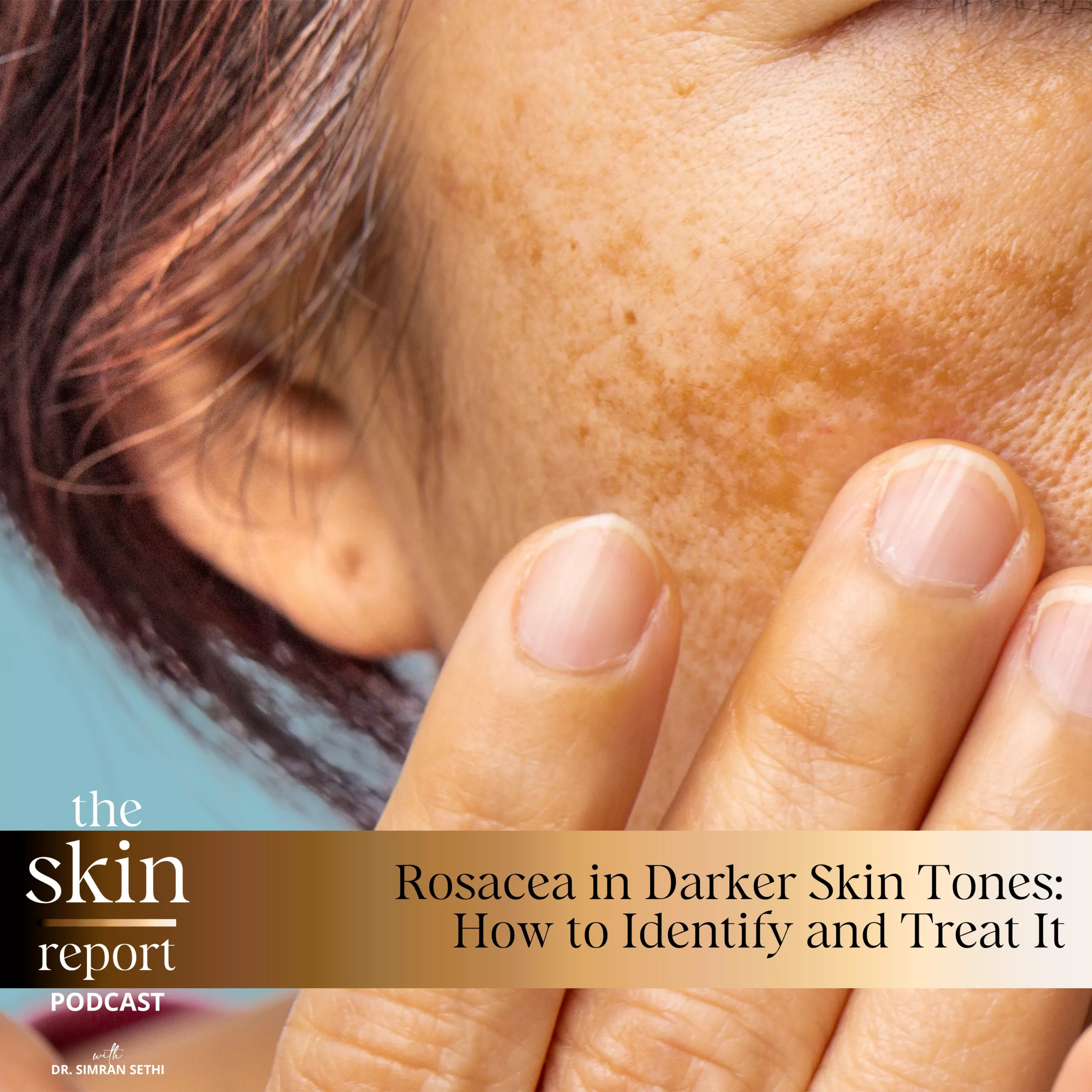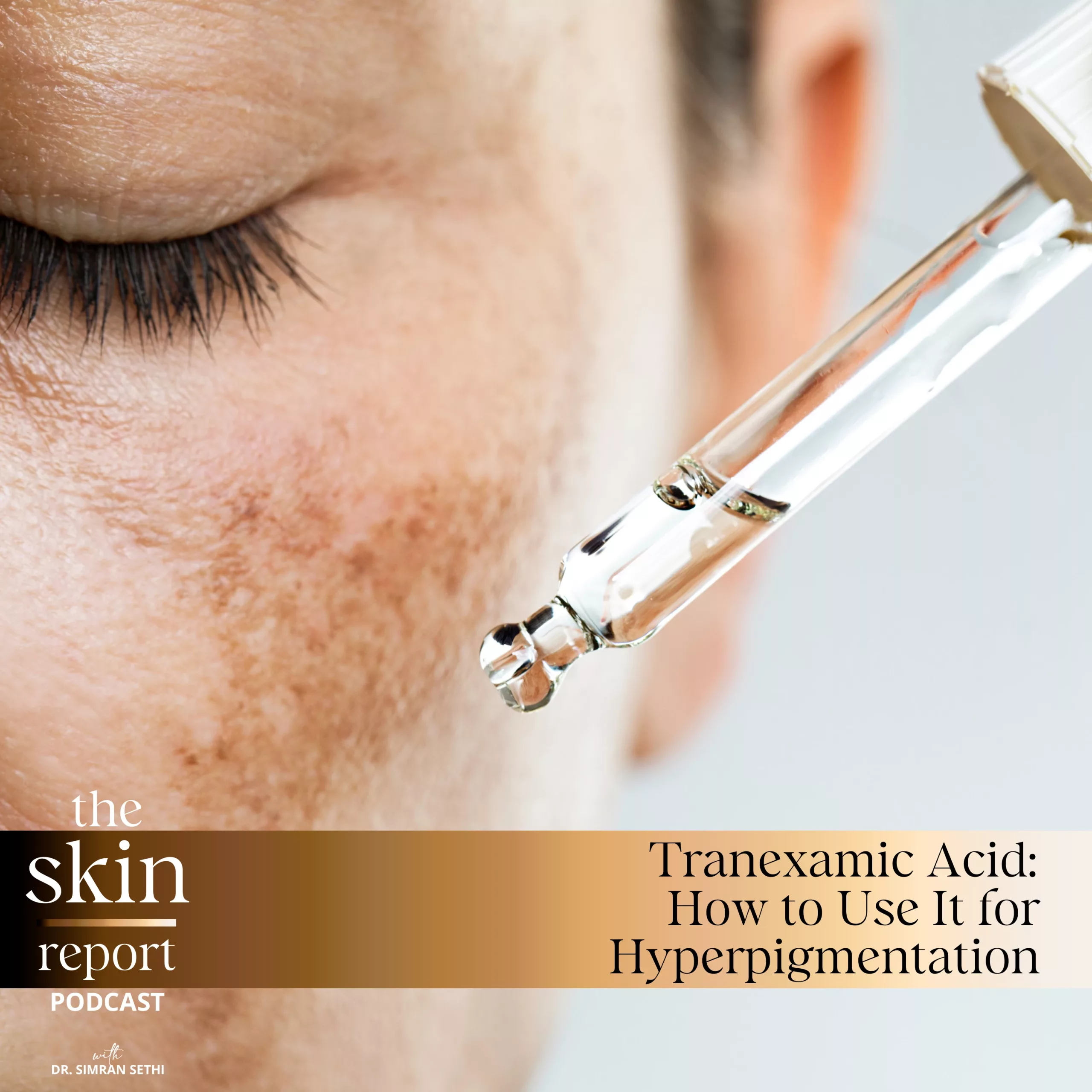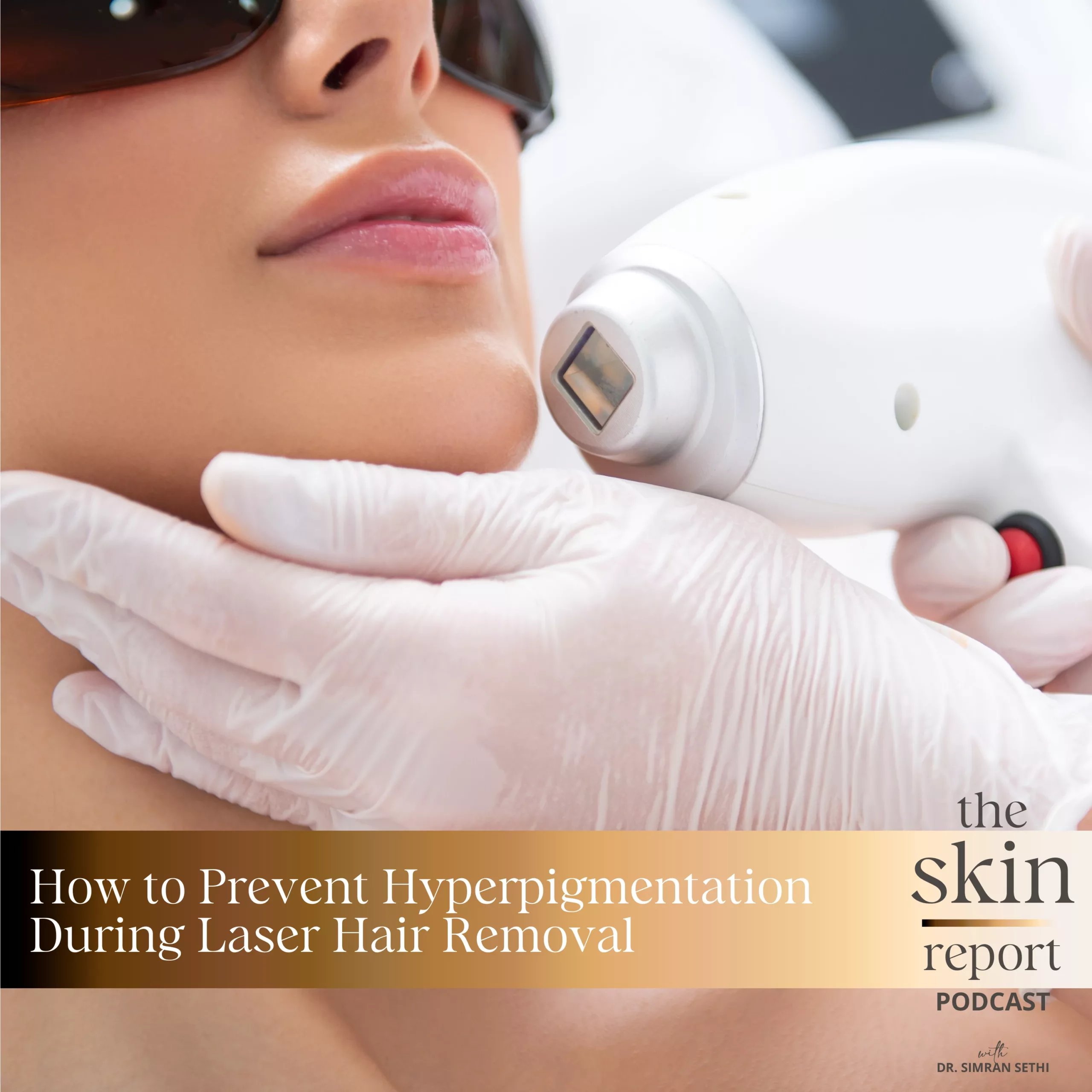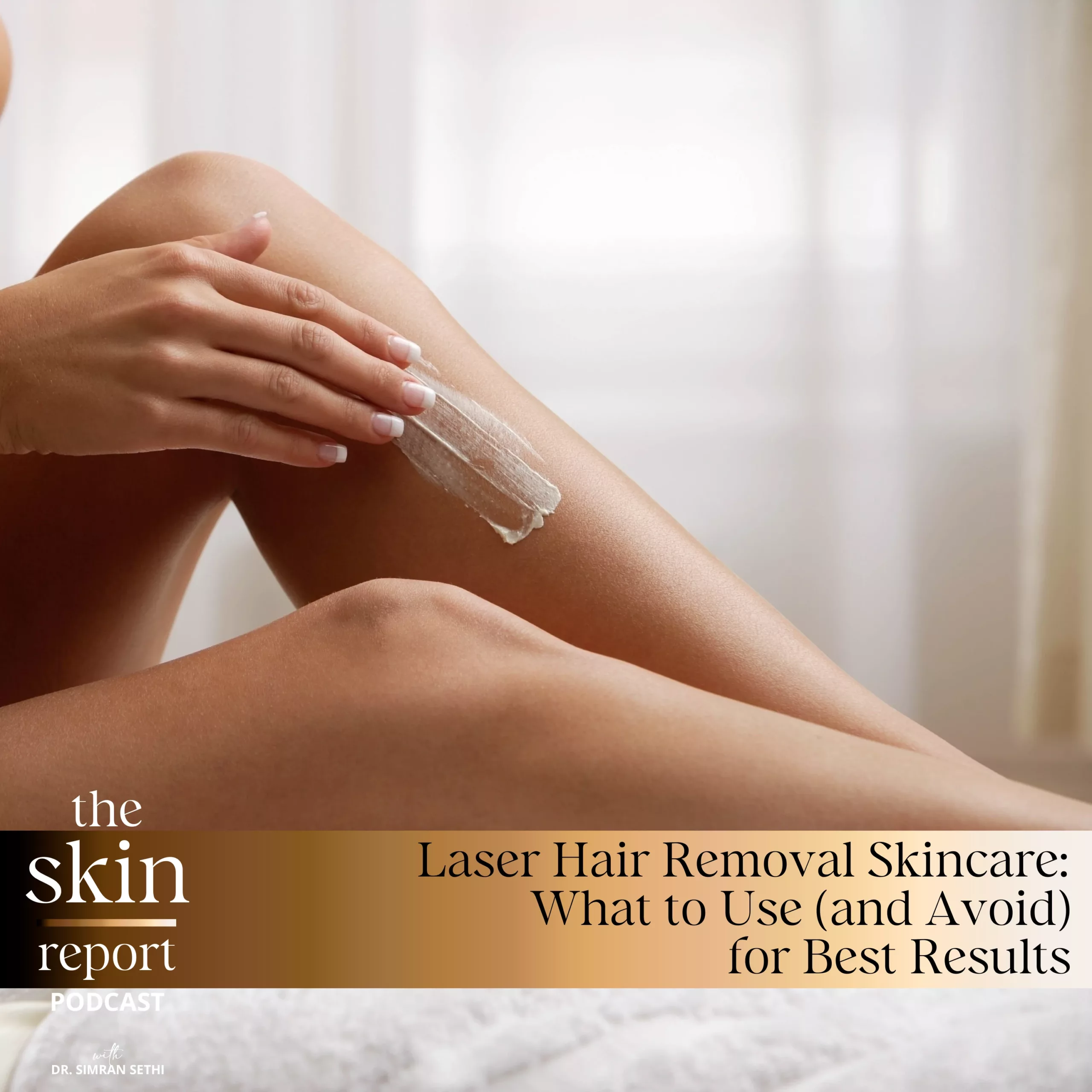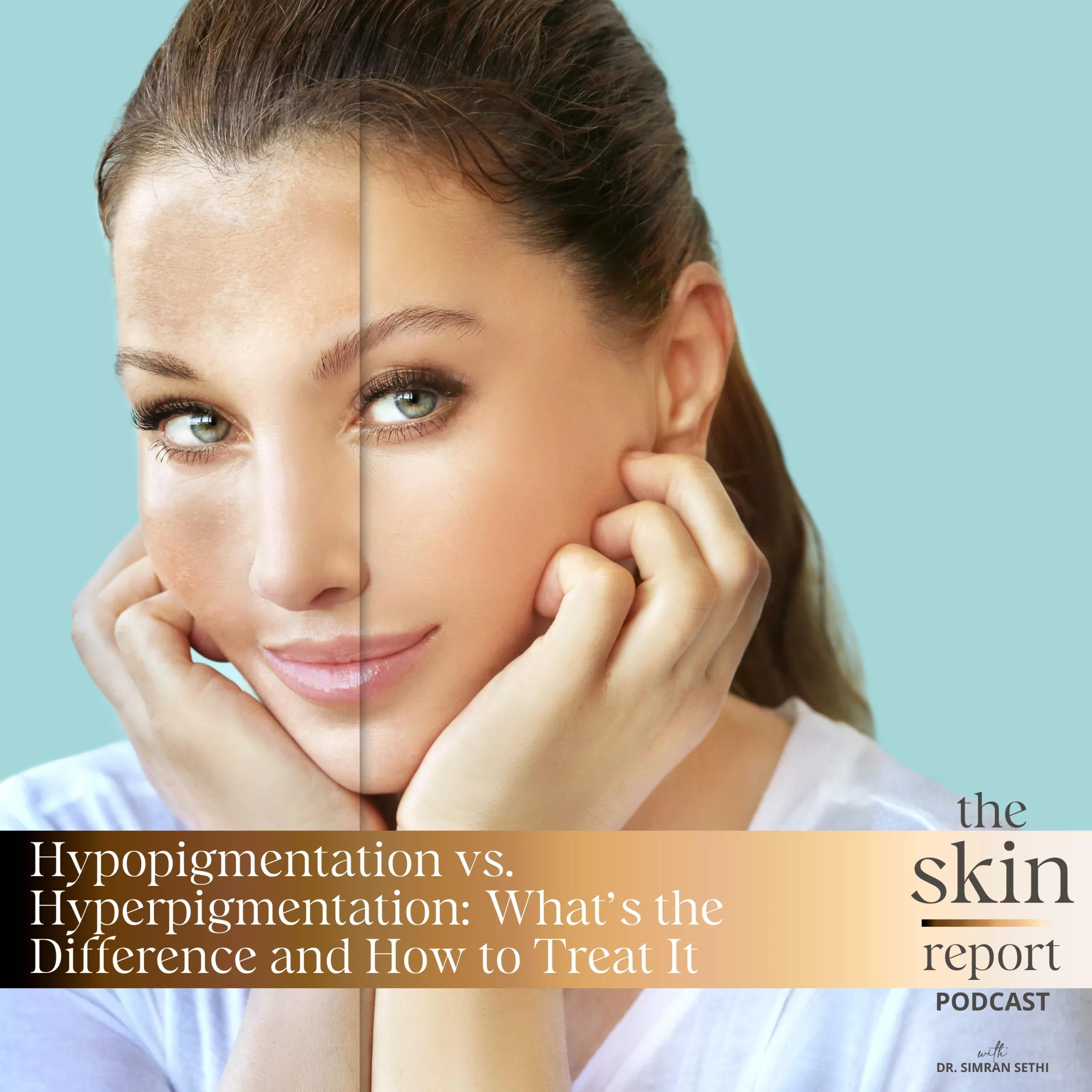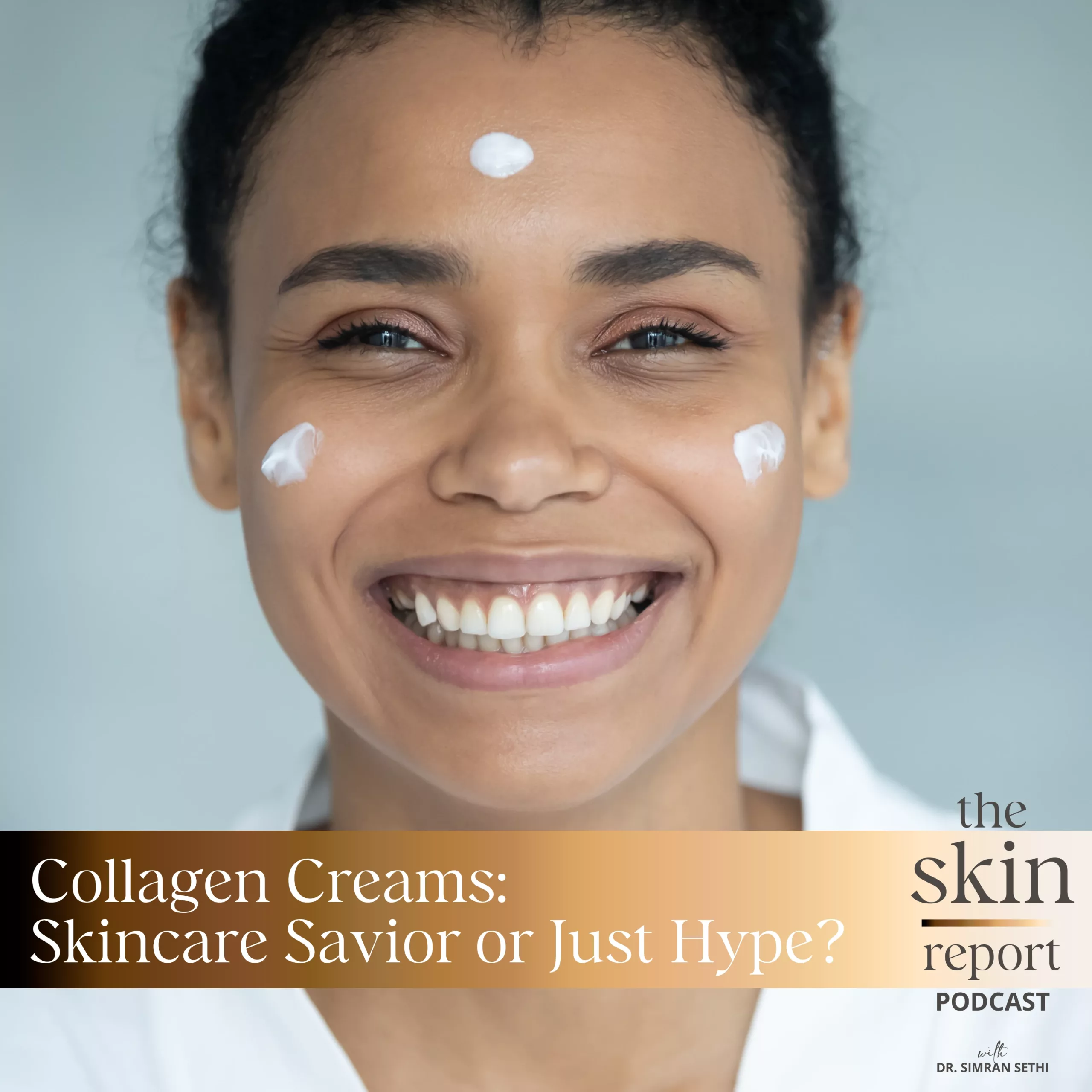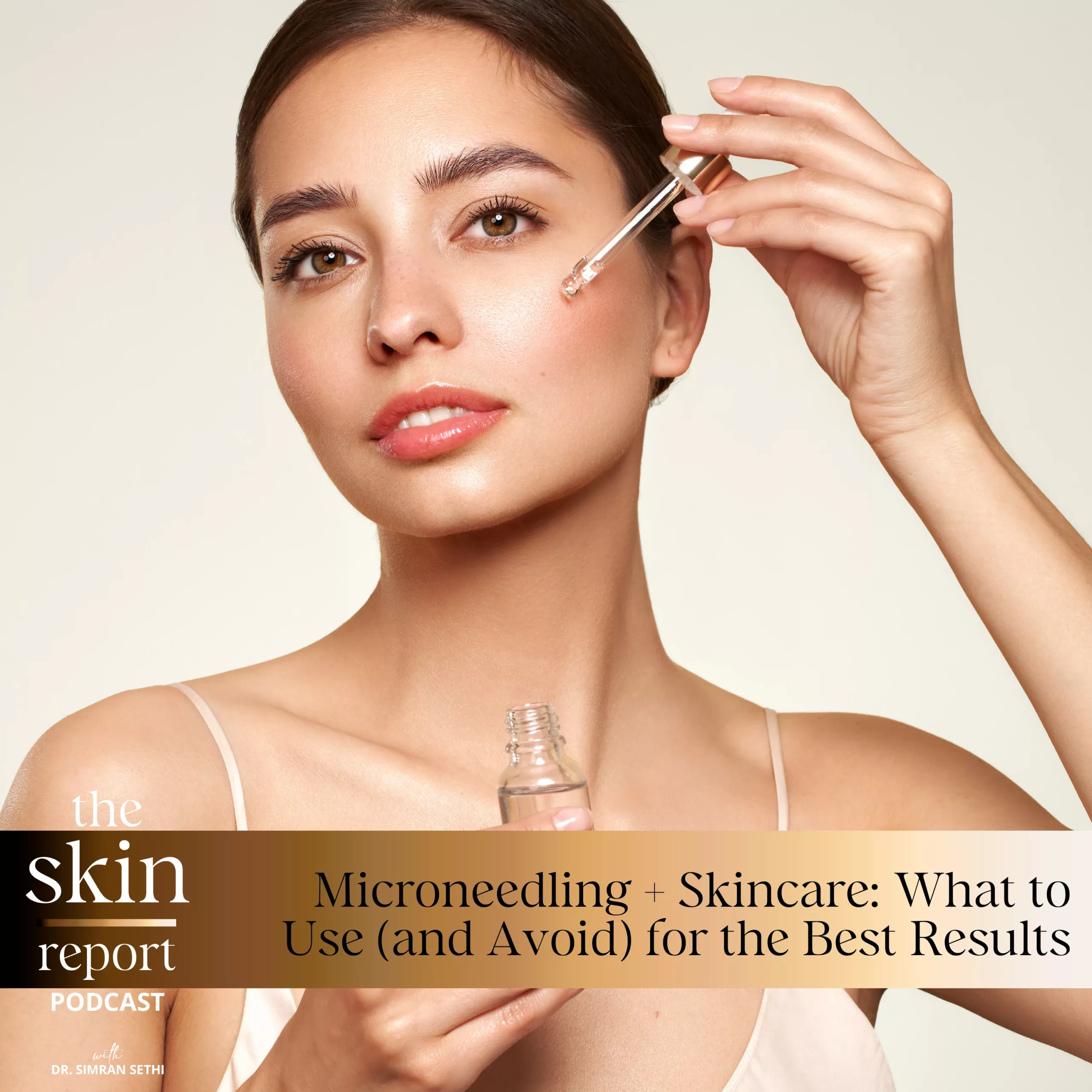If you have a darker skin tone and have looked into medical-grade procedures, you may have heard that they’re not safe for your skin type and can lead to more hyperpigmentation. There are many common myths and fears regarding skin resurfacing treatments, especially for treating people with darker skin tones. However, people with more melanated skin tones can treat their skin issues with certain procedures. The key is knowing which procedures are effective and safe when treating more melanated skin types and why.
The Skin Report is a podcast created to educate listeners on methods to improve skin health for people of all ethnicities and ages. For this episode, host Dr. Sethi provides an informative look into the world of aesthetic procedures. Treatments like laser resurfacing and microneedling, also called collagen induction therapy, are often used to correct texture and skin tone and for anti-aging purposes. This episode explores the science behind medical-grade skin treatments and why and how these treatments should be considered and applied to people of all skin types and tones. Additionally, Dr. Sethi shares helpful tips to listeners considering medical-grade skin treatments, discusses which kinds of lasers are best for which skin tones, and summarizes some of her favorite procedures that are safe for all skin tones.
Follow and DM a question for Dr. Sethi to answer on The Skin Report Podcast: RenewMD
Beauty Instagram: https://www.instagram.com/renewmd_beauty/
RenewMD Beauty Medical Spas, California: https://renewmdwellness.com/
https://www.grandviewresearch.com/industry-analysis/microneedling-market-report
https://www.webmd.com/beauty/what_is_microneedling
https://www.mayoclinic.org/tests-procedures/laser-resurfacing/about/pac-20385114
https://www.newbeauty.com/trending-aesthetic-procedures-for-men/
https://www.ncbi.nlm.nih.gov/pmc/articles/PMC6250459/
https://www.grandviewresearch.com/industry-analysis/microneedling-market-report
This transcript was exported on Jun 27, 2022 -view latest version here.
Skincare can sometimes feel overwhelming, whether it’s finding the right products, ingredients, or treatments. There’s a lot out there, but not always for women of color. That’s why I set out to educate myself and others so that we can all feel beautiful in our skin. Hello and welcome to The Skin Report. I’m Dr. Simran Sethi, an internal medicine doctor, mom of three, and CEO and founder of RenewMD Medical Spas and Skin by Dr. Sethi. Today, I want to explore medical grade treatments like laser resurfacing and microneedling. This is a big topic, but I’d like to give an introduction to these treatments so that whether you’ve never considered them before or have been wanting to do them for a while, we can all be properly informed on the science behind them.
In this episode, we’ll cover why and when medical grade skin treatments should be considered and I’ll summarize some of my favorite procedures that deliver beautiful results with minimal downtime and most importantly, are safe for all skin tones especially darker skin tones. Before we dive into skin treatments, I want to share a little bit of my skin journey and what I found when I was looking for solutions for my acne scars and dark spots. I had clear skin throughout high school. But when I started college, I suddenly started breaking out and breaking out a lot. Looking back, this could have been due to a change in hormones, more stress, or simply a change in location. Over the next few years, my acne did subside, but I was left with acne scars on my cheeks, dark spots where the scars were and overall, an uneven complexion.
I had tried so many skincare products and facials to help correct these skin issues but nothing was working. As I researched solutions, it became more and more clear that in order to get proper correction of my acne scars and pigmentation, I needed to consider medical grade treatments with a physician who specializes in aesthetics. The thought of doing more intense medical grade treatments on my skin was both exciting and scary, but I felt ready to take the next step towards healthier and clearer skin. This excitement soon turned into frustration as all the physicians I saw told me the same thing. “There are treatments for acne scarring but they’re not safe for your skin type and can lead to even more hyperpigmentation. This is a common issue with your skin type. And really, the best thing you can do is to continue using retinol and make sure you wear sunscreen.”
If you have a darker skin tone and have looked for medical grade procedures to clear your acne scars or dark spots, you may have had a similar experience to mine. But the truth is that people with more melanated skin tones can get correction of their skin issues with certain procedures. And the key is to know which procedures are effective. To start, let’s first go over the two main reasons people consider medical grade treatments for their skin. First, correction of texture and skin tone. This means tackling anything from acne scars to dark spots, uneven skin texture and skin tone, lack luster, dull complexion, malasma, sun damage, and environmental damage. What we’re doing is addressing a slow or damaged skin renewal cycle which is a clinical philosophy I stand by. Our skin is constantly renewing itself by making new skin. And in doingso, it repairs damage from aging, environment, and acne.
Just like your skincare, medical skin procedures should accelerate the skin renewal cycle but at a much greater rate than your skincare can do alone. Another huge main reason people opt for medical grade treatments is for anti-aging. Even ages as young as the mid-20s are now considering anti-aging treatments. And why not, anti-aging is most effective when there isn’t a lot of age-related damage to reverse. But most of my patients who are looking to reverse signs of skin aging are usually in their upper 40s and 50s. Interestingly, the procedures used for skin correction are almost the same as ones used for acne scarring and dark spots. Because just like in correcting skin issues, making the skin renewal cycle work faster and better by building new collagen and elastin is the key to erasing fine lines, wrinkles, and skin sagging.
Today, we’re going to be talking about two of my go-to treatments for accelerating skin renewal, laser resurfacing and microneedling. We’ll start with laser resurfacing, and then follow up with microneedling, and we’ll also get into which types of lasers are best for which skin tones. Okay, what is laser resurfacing? Skin resurfacing lasers can be categorized into ablative and non-ablative lasers. I do not use any ablative lasers in my practice as these tend not to be safe for all skin tones, require more downtime, and do not penetrate deep enough into the skin layers to provide effective results. Some examples of ablative lasers are IPL, fractionated, or CO2 lasers.
Ablative lasers work by burning off the top layers of skin with precision to treat dark spots, wrinkles, and more. The problem with this approach is that ablative lasers can only reach the epidermis, our superficial skin layer, which in turn can create increased pigmentation especially in darker skin tones that have a pigment rich epidermis. If you haven’t already, you can learn more about the layers of skin in the first episode of The Skin Report. Instead, I always usea non-ablative laser on my patients no matter what skin tone they have. Non-ablative lasers work by delivering vibrational energy straight to the dermis of the skin, our deepest layer where collagen and elastin skin proteins are produced, and this energy creates a controlled injury in the dermis and your skin then regrows in a way that appears tighter and smoother.
The non-ablative laser that I use in my practice is the PicoSure laser. It is definitely a workhorse in my office because a PicoSure laser can be used on all skin types and is a great solution for so many skin issues. We will discuss this in greater detail later on in today’s episode. Now, I know that you might be wondering if PicoSure is as effective as ablative lasers like IPL or fractionated lasers. Interestingly, it is actually more effective as it is working in the deepest skin layer which is exactly where we produce our skin proteins and new skin growth. What makes PicoSure even more popular is the fact that there’s literally no downtime after the treatment. Immediately after the laser treatment, the skin appears pink. But just within a short 30 minutes, this pinkness is almost completely gone and all you have to do is stay on a healthy skincare routine to support all the new skin growth the laser treatment stimulated.
To summarize, PicoSure laser, a non-ablative laser, can treat acne scars, dark spots, fine lines, and wrinkles safely in all skin tones. And if you have darker skin like mine, this laser is definitely very safe and effective on your skin. The next category of skin treatments that I love doing is microneedling. Microneedling, also called collagen induction therapy, is the process of pricking the skin with sterilized tiny needles to create tiny skin channels or injuries to the skin. This may sound painful, but honestly it isn’t because you are numb with a strong topical cream before the procedure and the treatment ends up feeling like a mild vibration on the skin. These little wounds actually trigger your skin to think it’s injured so that it can begin self-healing. This process stimulates your skin to naturally produce collagen and elastin to heal your skin and make it appear brighter and smoother.
Microneedling has gained tremendous popularity in the last five years. In 2020, the valued global market size for microneedling was almost five million. There are different types of microneedling, plain microneedling, microneedling with PRP, and microneedling with radio frequency. I will discuss these in upcoming episodes, but it’s important to remember that all types of microneedling are safe for all skin types. Now, you’re probably wondering who’s a good starting candidate for laser resurfacing and microneedling. Basically, anyone over 14 years old can get laser resurfacing and microneedling done. However, I start these procedures on most of my patients when they’re in their early 20s or older. These two treatments not only help to treat pigmentation and dark spots, but also help boost your skin renewal cycle no matter what stage your skincycle is in.
If this is your first time hearing about the skin renewal cycle on the show, be sure to go back and check out episode one where we discussed what it is and why it’s so important. When we return, we’ll tackle the side effects and common fears surrounding laser surfacing and microneedling. While medical aesthetics is my area of expertise, I completely understand that some of you may be nervous or cautious about trying medical grade treatments. That being said, I will never recommend any treatment I’ve not firsthand tried on myself or that may not be clinically backed with enough data on all skin tones and types. But why are people generally wary of trying medical grade aesthetic treatments?
Most people avoid medical procedures in general out of fear that they’re dangerous, or painful, or have a long recovery time. The wonderful thing about medical aesthetics these days is that most treatments are non-surgical or non-invasive, and these treatments are designed to not have a long recovery period, also known as downtime. Remember, more downtime does not mean more results. Before I go any further, I do want to address some common myths around medical aesthetic treatments so that you feel comfortable about your choices. The medical aesthetic procedures I’ve mentioned are safe and effective, but the experience of the medical provider you go to is equally important as the device is used to deliver treatments.
The other myth is that your skin will look worse or get hooked to doing procedures. This is actually a common question patients ask me because they’re nervous that their skin will simply go back to what it looked like prior to any treatments or get worse if they stop getting procedures. All of this is simply not true. Because the treatments, if performed correctly, will actually keep regenerating skin renewal, resulting in radiant and stronger skin. With all of this being said, there are circumstances under which I do not advise laser resurfacing and microneedling treatments. Under only medical supervision do I recommend medical aesthetic treatments such as laser resurfacing and microneedling on people 14 and up solely depending on their case and conditions of their skin.
I typically don’t consider any skin resurfacing treatments for teenagers with acne until I’ve tried topical skincare, facials, and light chemical peels, which usually is enough to correct their scars and hyperpigmentation. I also do not recommend any laser treatments during pregnancy or immediately after until the body readjusts. Microneedling is generally safe during pregnancy, but only under special protocols and with an experienced provider. Finally, I would not recommend resurfacing treatments if someone has a history of keloids, a skin condition that causes raised scars on areas where there’s been a cut in the skin. Keloids are not an absolute contraindication to get skin treatments. But just to be safe, if I’m working with a patient with a history of keloids, I first perform a test bot by the ear to assess for any kind of reaction before proceeding with a full treatment.
So far, we’ve talked about what PicoSure laser and microneedling are. And when we return, we’ll discuss why and how these treatments are safe and effective on darker skin tones and some general guidelines I follow in treating more melanated skin types. As we’ve discussed on the show before, skin tone is just as important a factor in our skincare approach as is our skin type. In episode two, we chatted about how darker skin tones react with more melanin produced in response to a skin insult leading to hyperpigmentation and other dark spots. So, how can people of color get laser resurfacing and microneedling done if these treatments rely on creating skin insults? I understand that this may sound nerve-racking, but I assure you that if you find a medical spa provider who has a deep understanding of all skin tones, especially darker, more melanated skin tones, you will be in safe hands.
The aesthetics market has simply not considered the intricacies of treating more melanated skin tones. And as a result, there have not been enough clinical studies to establish safe and effective treatment protocols. For the safest and best results that are truly science-backed and clinically-proven, stick to the principle of working in the deep dermis and keep the epidermis happy and you will not run into any side effects while getting excellent results. I use this exact scientific principle in choosing the right treatments for myself and my patients’ skin conditions and have been consistentlyable to deliver beautiful, long-lasting results. And because I’ve been able to see these results as a key opinion leader for a global medical aesthetic device company, I now share my protocols with other providers who like me are treating all skin tones and want to take their more melanated patient skin to the next level.
Let’s start with laser resurfacing. Only certain skin resurfacing lasers are not good for darker, more melanated skin tones. Traditional resurfacing lasers like ablative Fraxel and carbondioxide can cause hyperpigmentation and even burns to the skin’s epidermis. Lasers like PicoSure for example but not limited to, send ultra short pulses of energy without heat which is very important for combating inflammation, discoloration, and melasma. The laser’s impact on the skin is intense but gentle and PicoSure shatters the problem skin pigment or particles. These particles are then eliminated naturally by the body.
Microneedling is safe for any skin tone. As we discussed earlier in the episode, this treatment creates controlled micro injuries into the skin at various depth to aid in the production of collagen and elastin. The skin then responds with its own repair mechanism to self heal, resulting in a thicker epidermis, softer appearance of wrinkles, improved skin tone, pore size, and acne scars in addition to combating acne and inflammation production because of a strong skin renewal cycle and skin barrier. In a way, your skin will become stronger because of microneedling. Another demographic I want to discuss is men. Whether it’s just not being marketed to or not seeing people they can identify with in the medical spa or skincare market, men tend to avoid aesthetic treatments.
However, men can and should absolutely take advantage of them, and some do. A recent survey showed that 31% of men surveyed would seriously consider an elective aesthetic procedure. Men produce more oil generally as they either shave regularly or they may not use a moisturizer or serum to protect their skin barrier. As a result, their skin may then over produce oil leading to acne or acne scarring, dark spots, and more. So, procedures like laser resurfacing and microneedling can be very helpful in freshing up the skin. In fact, with microneedling, men don’t necessarily even have to shave their facial hair before the procedure if they don’t want to as it can still be performed on their beard.
We’ve discussed a lot today. So before we end, I want to leave you with some helpful tips that can guide you if you’re considering medical grade skin treatments. I want you to feel fully informed before your consultation and treatment which is key to getting the best and most long-lasting results. A question that I often hear is, “How frequently should I get these treatments done once I start?” This all depends on age and type of skin goals. But generally, I recommend a series of three to four treatments, each spaced one month apart, initially to get full correction of the skin texture or pigmentation issue. After that first series, it’s best to maintain your skin with one treatment every four to six months just to keep your skin healthy and erase the negative effects of UV and pollution exposure on our skin.
While this may seem like a big commitment, I’d like to talk about why I recommend it. If skincare is like nutrition for the skin, aesthetic medical treatments like laser resurfacing and microneedling are like the exercise for the skin. Skincare and skin treatments go hand in hand. And if you’re able to, I also recommend a facial every four to six weeks to get a deep cleansing of your skin and improved skincare product penetration. Daily skincare is extremely important, but skincare alone cannot transform the skin renewal cycle itself. Medical grade treatments are truly able to penetrate the skin and reach even deeper than traditional skincare, allowing for a completely invigorated cell turnover.
Whether you’re considering your first treatment or a follow up, I hope this episode helped provide an informative look into the world of aesthetic procedures. Your skin takes care of you, so I believe it’s worth investing in its care. If you’d like to learn more about science-backed skincare or medical aesthetic treatments, please subscribe to and turn on notifications for The Skin Report so you always know when a new episode is up. If you have a skincare question or want to make an episode topic recommendation, please message me at theskinreportbydrsethi.com which is linked in my show notes and I’ll be sure to answer your question in an episode soon.Thanks for listening and until next time, love the skin you’re in and celebrate your beauty
Transcript by Rev.com


